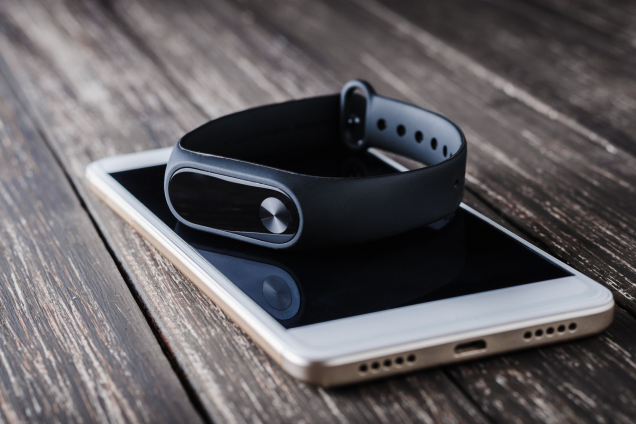Increasing physical activity among persons living with HIV engaged in unhealthy drinking
An interview with Project Leads: Lisa Quintiliani, Ph.D. & Ana M. Abrantes, Ph.D.


What is the background of this project?
The era of antiretroviral therapy (ART) has shown increasing life expectancy and decreased HIV-related deaths, leading to a growing older adult HIV population. Yet, HIV accelerates the aging process and increases risk for numerous chronic health conditions that compromise physical and mental health functioning and quality of life. Persons living with HIV (PLWH) continue to have shorter life expectancies relative to the general population and these multi-morbidities explain this increased risk. In this context, unhealthy alcohol use is common among PLWH and further increases risk for negative outcomes. Unhealthy alcohol use has been defined as encompassing the range of risky alcohol consumption which includes hazardous drinking, harmful drinking, and alcohol use disorder (AUD).
How does physical activity fit into this picture of compromised physical and mental health functioning?
Efforts toward addressing a highly prevalent condition among PLWH – physical inactivity and sedentariness – may prove beneficial for changing unhealthy drinking and physical and mental health functioning. To date, interventions to increase physical activity in PLWH have consisted of structured, supervised, gym-based approaches that have been limited in their reach and associated with high drop-out in this population. In this study, we are proposing an alternate physical activity (PA) paradigm – home-based, lifestyle physical activity (LPA) with mobile health-delivered components. LPA interventions consist of behavioral strategies that guide individuals to integrate intermittent bouts of PA in their daily routines. An added strength of the LPA approach is it may be well-suited for PLWH engaged in unhealthy drinking by providing cumulative physical and mental health effects from regular, daily PA as well as acute effects on negative affect, common among PLWH engaged in unhealthy drinking. This would be the first study to test the efficacy of an LPA intervention in PLWH engaged in unhealthy drinking.
What are the main methods?
Through online recruitment of PLWH, we will identify HIV+ unhealthy drinkers and randomize them to a 12-week LPA with mobile health-delivered components (i.e., Fitbit device and app) or to a Fitbit Only condition. We will study changes in drinking, objectively measured physical activity levels using the Fitbit, physical functioning, and mental health outcomes at 3- and 6-months. To examine mechanisms of intervention effects, we will include two, 14-day bursts of Ecological Momentary Assessment (EMA) to obtain daily measures of affect, urges to drink, alcohol consumption, and physical activity engagement.
Where does the Center fit in?
ARCHER is ideally suited to support the successful execution of this project. With the support of the Biostatistics and Data Management Core we will be able to capitalize on existing methodology and statistical approaches ideally suited to test our project Aims. These include measures of physical functioning and EMA protocols and analyses. In addition, the Administrative Core of the Center will be integral in aiding our recruitment and screening procedures to ensure successful study completion.
OK, sounds great! What are the aims?
Primary Aims – Physical Activity and Drinking Outcomes
To test the efficacy of a 12-week LPA+Fitbit intervention among low-active, 220 PLWH engaged in unhealthy drinking. Participants will be randomly assigned to either: (a) LPA+Fitbit or (b) Fitbit Only control condition. Relative to Fitbit Only, we hypothesize that:
1.a. LPA+Fitbit will demonstrate decreases in unhealthy drinking (i.e., drinks/week) at the end-of-treatment (EOT; primary outcome) and 3 months later (i.e., 6-month follow-up).
1.b. LPA+Fitbit will demonstrate higher objective-determined physical activity engagement (i.e., steps/day) at the EOT (primary outcome) and at the 6-month follow-up.
Secondary Aims – Physical and Mental Health Functioning Outcomes
2.a. Relative to Fitbit Only, LPA+Fitbit will result in decreased negative affect and sedentary behavior (i.e., minutes spent sitting/day), heavy drinking days, alcohol-related problems, and increases in adaptive coping, PA self-efficacy, PA motivation, and physical/mental functioning at EOT and 6-month follow-ups.
Tertiary Aims – Examining Mechanisms
3.a. Decreases in negative affect and increases in adaptive coping during the intervention period will mediate the relationship between LPA+Fitbit and drinking outcomes at the 6-month follow-up.
3.b. Increases in PA self-efficacy and motivation will mediate the effect of LPA+Fitbit on PA engagement.
3.b. Utilizing time stamped EMA and Fitbit data, we hypothesize higher negative affect and urges to drink earlier in the day will increase bouts of PA later in the day at EOT, relative to baseline, and among persons randomized to LPA+Fitbit versus Fitbit Only.
